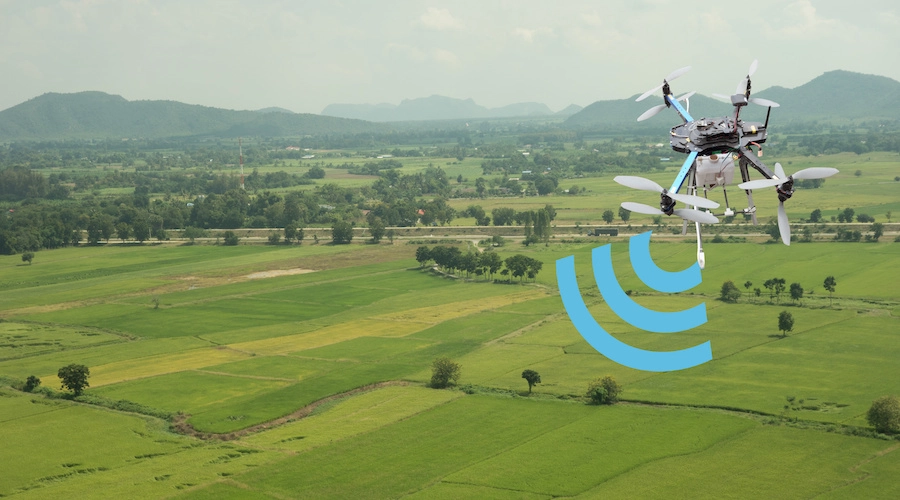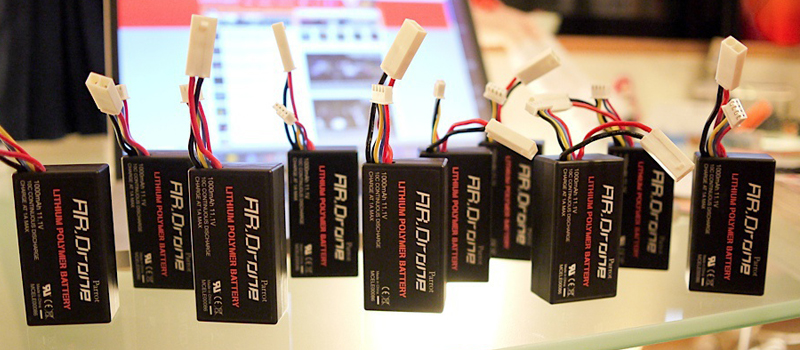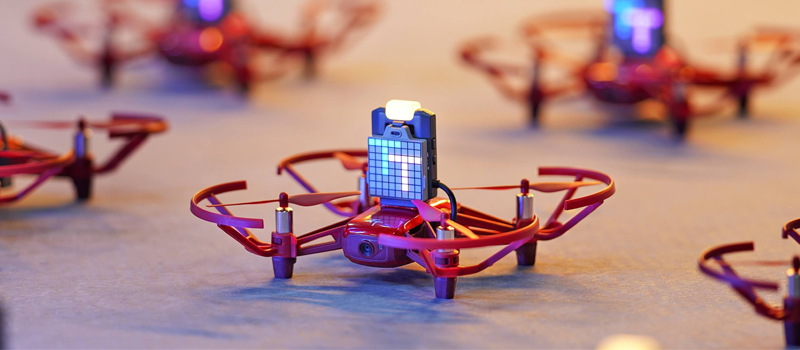Sixteen drones from different manufacturers and two broadcast modules have received approval from the FAA as compliant with Remote ID requirements. Newly manufactured versions of these drones will be compliant with no further action required. For older versions, a firmware upgrade will be necessary and may be released at a later date.
In about a year, all drones flying within U.S. national airspace will be required to comply with Remote ID rules with a few exceptions. However, the deadline for drone manufacturers to make their products compliant will come sooner. Which of the commercially available drones has received FAA approval for Remote ID?
The list of drones approved for Remote ID
The FAA has released a list of drone models with approved Declaration of Compliance (DOC) for Operations over People and Remote ID rules. This list is continuously being updated and the list below reflects its status as of September 28, 2022.
Current Remote ID-approved drone models are:
- Autel Evo Lite+ MDXM2
- Autel Evo Lite MDXM
- DJI Matrice 300 RTK
- DJI Mavic 3 Thermal
- DJI Mavic 3 Enterprise
- Sony ARS-S1
- DJI Matrice 30 Thermal
- DJI Matrice 30
- DJI Mavic 3 Cine
- DJI Mavic 3
- DJI Avata
- DJI Air 2S
- DJI Mini 3 Pro
- Wingtra WingtraOne Gen II
- Microdrones md4-3000
- Microdrones md4-1000
The FAA has also approved two broadcast modules for Remote ID:
- Dronetag Mini
- BlueMark db100
This means that all newly manufactured versions of these drones and modules will be considered compliant with Remote ID. This does not mean yet that these drones will start broadcasting Remote ID information, but only that they already comply with the standards set by ASTM F3411-22a-RID-B.
For previously manufactured versions of these drones, the pathway to compliance will likely be done through firmware updates. DJI has released a statement saying that the firmware of their drones will indeed be made compliant by an update that will be released at a later date. We expect other drone manufacturers on the list to do the same.
If your drone is not on the list yet, then it may be a good idea to check it out from time to time. It is a continually growing list and has expanded substantially just within the first month. We expect this list of Remote ID-compliant drones to grow significantly before the December 2022 deadline. In any case, it is assuring to see major names like DJI and Autel on the list.
What is a Declaration of Compliance?
The drones that have been listed as compliant with Remote ID are those for which the manufacturer has submitted a valid and approved Declaration of Compliance (DOC). To understand better the importance of the DOC, we must also define what a Means of Compliance (MOC) document is.
The MOC is a document that a drone manufacturer prepares and sends to the FAA for approval. The MOC details how the manufacturer intends to meet the FAA’s standards for any rule. This typically includes a description of the technology, processes, testing procedures, analysis, and inspection of results.
Once a MOC has been approved by the FAA, the drone manufacturer can then go through the processes that they have proposed to make each drone model compliant with FAA standards. This will then be documented on a DOC which has a list of drone models and corresponding serial numbers that have gone through the standard processes indicated in the MOC.
The current status of Remote ID deadlines
The original deadline for compliance of drone manufacturers with Remote ID standards was September 16, 2022, but this has since been moved to December 16, 2022. From this point on, all drones manufactured and sold in the U.S. must comply with Remote ID.
Drone pilots do not need to concern themselves with this deadline as the drone manufacturers will have to do all the work. However, the relevant deadline for drone pilots would be on September 16, 2023. Starting that day, all drones operating in U.S. national airspace, with very few exemptions, will need to be equipped with Remote ID.
Compliance with Remote ID can be done by purchasing a drone that has already been officially declared as Remote ID-capable, installing firmware upgrades that will add Remote ID features to older drones, or installing a Remote ID broadcast module. Conversely, it is possible to fly without Remote ID but only within pre-determined FAA-recognized identification areas (FRIAs).
There is no word yet from the FAA on whether the 2023 deadline will be moved. This probably depends on how readily older drones can be modified or updated to make them compliant with the new standards. This is a development we will be keeping an eye on in the coming months.
Final thoughts
The original deadline may have lapsed, but it is reassuring to see that some drone models are finally getting approved for Remote ID. If your drone isn’t on the list yet, just keep an eye on the official FAA website as the list seems to get updated at least once per week. Finally, the matter of Remote ID and its implementation is getting some clarity.
Even if your drone does not get Remote ID approval, you can equip it with an approved Remote ID broadcast module. There is plenty of time to see how things play out as the deadline for complete implementation is still next year.



